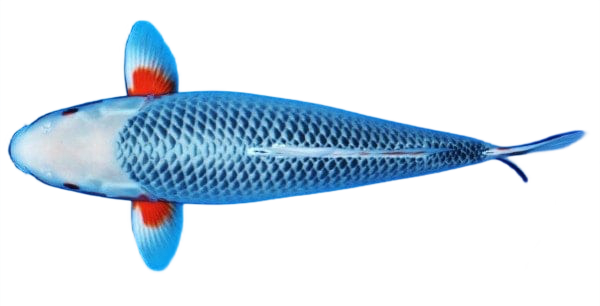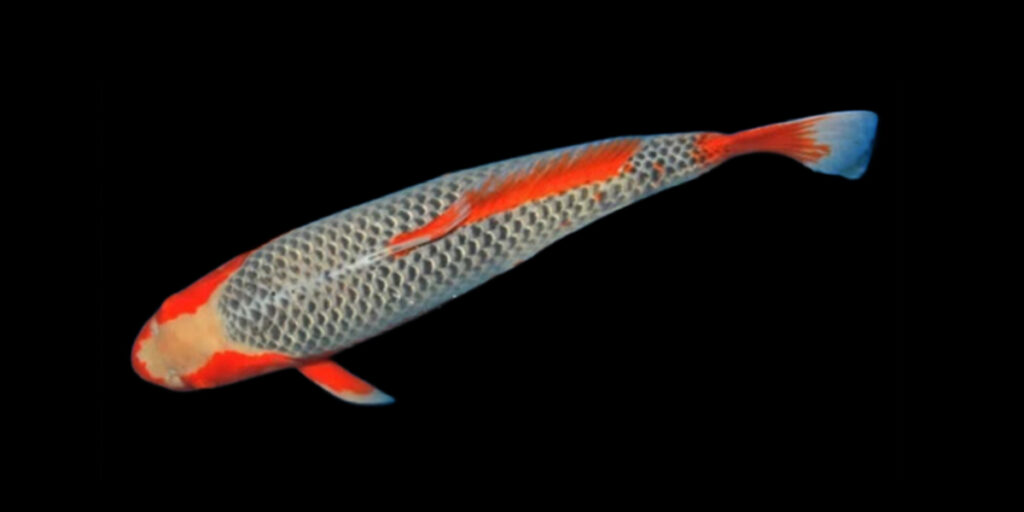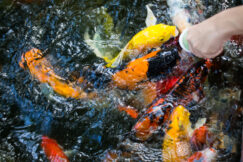Asagi Koi has been a popular fish with koi enthusiasts for centuries. Read on to learn more about the different aspects of Asagi Koi and how you can care for them in the best way possible!
What is Asagi Koi?
The Asagi is one of the most ancient koi breeds. You’re lucky to find this rare blue-scaled koi in a pond near you, as it’s stoic, modest, and sometimes even considered an acquired taste.
Are Asagi koi rare? There are only 2 or 3 of these rare koi in the US! A couple of decades in development.
What Is the Meaning of Asagi?
There is significant disagreement over the actual meaning of “Asagi.” According to some accounts, it is derived from the Japanese terms for “indigo” or “bright blue,” while others believe it is derived from the Japanese words for “setting sun” or “mist.” Online translation services are ineffective. While we can’t help you with this, it appears that any of them are plausible options considering Asagi’s color and patterning.
Asagi’s history
The prefix “Narumi” comes from the same-named town in Ichi Prefecture, where a locally created cloth was thought to mirror the pattern on the backs of these koi.
Asagi appears to have appeared throughout Japan, not only in Niigata, at a time when interest in mutant fish led to them being separated from the food crop and bred together for curiosity, long before koi was recognized as a commercial opportunity.
Asagi has been around since the 1700s, with breeding to “enhance the Asagi line as ornamental” beginning in 1868.
Are Asagi Koi expensive?
The price of Asagi koi can vary greatly based on size and type. Small (less than six inches) Asagi may be obtained for less than $50; however, larger (more than 12 inches) Asagi can cost hundreds or even thousands of dollars, depending on the kind. Gin Rin Asagi is among the most costly because of its reticulation and metallic scales, which give them a diamond-like look.
How to identify Asagi Koi

Asagi progeny resembles the usual Asagi koi, with blue nonmetallic scales, a reticulated diamond-like scale pattern, and splotches of red pigmentation known as hi.
These can be found on the gill plates, the abdomen, and the tail. These red spots can also be found on the koi’s dorsal fin. The red tint that emerges in Asagi koi is more of a rusty tone than a brilliant red. As koi grow older, the hi might spread.
Hi Asagi koi is Asagi koi with more red coloring than typical. Taki Asagi is a variant of the traditional Asagi koi. These koi resemble Asagi but have an extra line of white scales between their red and blue coloring. Asagi koi with crimson eyes are highly sought after.
While Asagi koi produce many typical offspring, only a handful are considered flawless or faultless. This is one of the reasons why Asagi koi are considered an acquired taste. Symmetry is preferred in the perfect Asagi koi.
This commonly despised koi criterion is respected in the Asagi lineage. Asagi koi have idealistic symmetry in terms of their red patches. Therefore, any spotting or straying of red pigment on the head or scales is considered a defect.
Because the blue scales are so prominent, any areas of missing scales stand out and are seen as a serious flaw. Therefore, red eyes are preferred for the perfect Asagi koi.
The head of a faultless Asagi koi is white. These koi, on the other hand, frequently have grey-toned heads. In addition, red pigmentation can appear on the head at times. The koi is thus classified as a Menkaburi Asagi, a subspecies of the Asagi koi.
Examine the tip of the nose while selecting a juvenile Asagi koi. If it is devoid of imperfections and splotches, the head may also evolve to be clear. In many circumstances, when the head is light in color and clean, the skull of a juvenile Asagi may be seen through the skin. Don’t be concerned; the koi will grow out of it.
The ideal Asagi’s back is covered with blue scales, with a light blue tint towards the scale’s base that fades to a deeper hue in an ombre-like way. On each scale, the contrast between bright and dark is idealized.
Don’t be concerned about having a juvenile Asagi koi with dull scales. The scales’ colors get deeper and more vibrant as the koi matures. Lighter blue Asagi is often chosen over darker blue Asagi.
Asagi Koi Environments

With a high GH, your Asagi begins to acquire black patches and a graying white brow.
To meet the criteria of our particular color variety, pond readings should be about 7.4 for PH and less than 100 for Gh and Kh. Asagi was the first color variation to be formed, and all subsequent color variants were bred from this koi.
Asagi prefers water temperatures between 50° F to 78° F, or 10° C to 25° C. Colder water appears to lead to a deeper red or blue coloring. In contrast, warmer water appears to lend to less brilliant colors, albeit these findings can also be altered by nutrition.
They are the most powerful because they are the closest to wild carp. If you offer your kid colored food, you are pushing the red to establish itself forcefully.
What to Look for When Buying Asagi Koi Fish
You may be wondering how to choose an Asagi koi for your koi pond now that you’ve learned a little bit about them. First, consider the scales, head, color, and pectoral fins of your next juvenile Asagi.
Examine where the pattern begins on the fish’s scales. The pattern should start just below the head and go to the tail. Again, you’ll want to look for Asagi with even patterning. Large color variations are typically undesirable.
The quality and color of the fish’s head are the next things to look for. Some individuals seek red-eyed Asagi koi fish. However, most people prefer an Asagi fish with a clear, white head to one with markings or splashes of color on its head. The bones of the fish’s skull can be seen in younger fish. The skull’s color will bury the bones as they age.
The color of the fish is entirely up to your desire. A pale blue hue may appeal to you more than a darker or mid-blue tint. Some koi collectors want a brighter orange around the fins, tails, and heads of their koi. Others choose a deeper reddish color to suit their tastes.
If you want Asagi koi that you can sell later, most consumers prefer a lighter blue. They also prefer red marks and splashes that are homogeneous or have a pattern. The red or bright orange hue in the scales should not overlap with the blue.
Asagi koi fish have a range of colors on their pectoral fins. There are all-white fins, all-red or orange fins, and a mix of red and white fins. There is no standard in terms of desirability. It’s essential to follow your gut sense regarding what you find most appealing.
FAQs
Why does my Asagi koi appear grey rather than white?
A variety of factors can cause color loss in koi. White pigment cells are Asagi and Shusui kinds, whereas white lacks any chromatophores. Your koi’s nutrition is crucial for her overall health because she may not look her best after being badgered and forced to produce eggs.
What should I feed Asagi koi?
Depending on the water temperature and time of year, koi should be given different diets or none. In the spring and fall, when the water temperature is between 55° F and 65° F,
How do you choose Asagi Koi?
The greatest Asagi koi for your pond will not have any hi past the fish’s lateral line. The top of an Asagi’s head (forehead) should be free of markings and white or a pale blue. The color on the head should be limited to the cheeks and nose.
Conclusion
All of the Asagi is simple to care for. Asagi will eat traditional pellet food; however, high-quality koi food is usually advised. They get along well with all other koi species. When properly cared for, they will bring stunning beauty to any koi collection and become a long-term family member. Keeping the Asagi alive means preserving koi history; it is a link to another time in history and a delight to see now.




